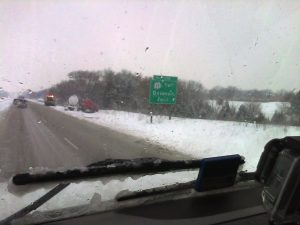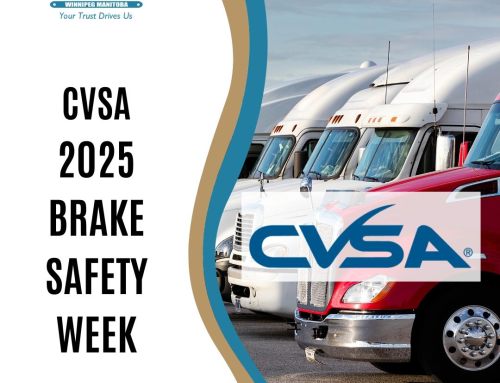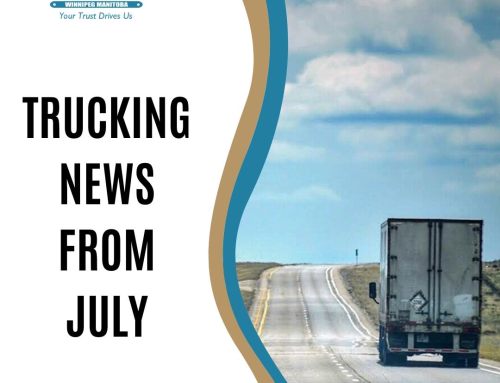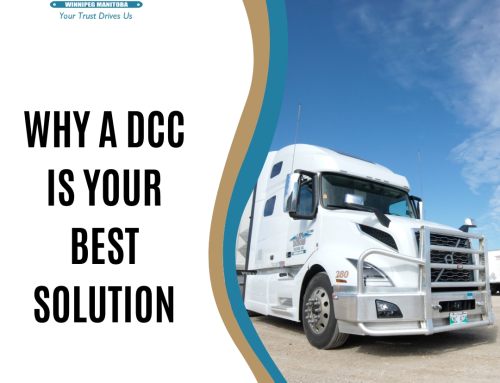 Here we go again with another winter. Driving big trucks & being based out of Winnipeg means for the next 6 months we will face winter driving, often treacherous driving, conditions every run. This is never a fun time of year in the trucking business.
Here we go again with another winter. Driving big trucks & being based out of Winnipeg means for the next 6 months we will face winter driving, often treacherous driving, conditions every run. This is never a fun time of year in the trucking business.
Passing and changing lanes is a maneuver that carries a lot of risk even when driving conditions are great. Mostly it’s perceived to be a simple maneuver. We do it almost out of reflex and we can get lazy about it. However, it’s something we do many times per day, big trucks have huge blind spots, and four wheelers often race us to prevent us from getting in front of them.
Additional Risk Passing in Winter Driving Conditions
Snow, icy roads, and limited visibility make lane changes more challenging in the winter months.
In a snow covered lane you can blind other drivers when you pass and/or be blinded as you pass. Multiple vehicles who can’t see past the nose of their vehicles is a nice recipe for a multiple vehicle highway crash.
When the conditions dictate slower highway speeds passing takes longer. This increases the time of your interaction with other motorists on the road. You’re at more risk the longer you’re in the passing lane beside another vehicle reducing escape routes if evasive action has to be taken in case of an emergency.
The left lane on an interstate highway is less used and can be far more icy that the right travel lane. Just because you have traction in your lane doesn’t mean you will have the same traction 8 feet to the left.
You’ll need to accelerate in the left lane. Accelerating and travelling at a higher rate of speed will require more traction to maintain control of the vehicle. Your lane might be good for the speed your travelling now, but maybe not at a higher rate of speed. It’s always better to travel slower in adverse conditions.
On two lane highways, you pass using the oncoming lane. The increased time it takes to pass heightens the risk of everyone around you. Coupled with reduced visibility and uncertain surface conditions you really need to be motivated to pass a slower vehicle to accept such risk.
The truck driver in front of you may have recently had a different experience on the road. That driver may have just had the drives slip and is aware the road conditions are worse than you think. He/she might be new to the industry and is a little freaked out about the current driving conditions. Passing and possibly blinding them with snow can easily cause an accident. Consideration for others on the road is part of being a professional and taking cues from other professionals can give you a better sense of the current driving conditions.
Passing Tips
- Your CB radio can really help in bad weather. Keep your radio on and communicate with other trucks when you attempt to pass or are being passed.
- Help out other motorists when you’re being passed. Reducing your speed slightly and flashing them in can help them pass safely.
- The surface condition of the left lane can be very different than your current lane. Take visual cues and look for snow pack and drifting and watch the reflection of lights on the road surface. These are only a few clues about the surface conditions.
- Assume there is black ice and reduced traction in the left lane then consider if it’s safe to be in at higher speeds. Never assume the lane is as good or better than the lane you’re currently traveling.
- Easy into the lane. Don’t jerk the wheel to get into, and out of, the lane.
- Let vehicles who are coming up on you, in the left lane, pass you before you initiate passing a slower vehicle. Don’t force them to hit their breaks or considerably reduce their speed.
- Remember wind and blowing snow can ice up a lane. If it’s blowing assume the worst for the road surface.
Do You Really Need to Pass
How much time are you really going to save? If another vehicle is going dangerously slow then it maybe safer to overtake and pass. If you know you’re going to be stopping soon then following at a safe distance might be safer than accepting the risk of passing just to save, literally, a couple of minutes.
We face higher risk of an accident just by being on the road as much as we are and driving large heavy combination vehicles. Reducing risk and not accepting needless risk improves our odds of not being in an accident. No one ever expects to be in or cause an accident before they take an action. What if the action you’re about to take increases your risk and then causes an accident? Professional drivers need to be professional at risk assessment.
No load or delivery time is worth causing, or being involved in, an accident. At Len Dubois Trucking safety comes first. Drivers are expected to conduct their duties in a safe manner. We understand the challenges winter driving conditions present. If your going to be late due to driving conditions just contact dispatch and the clients affected. Safety is a team effort!




